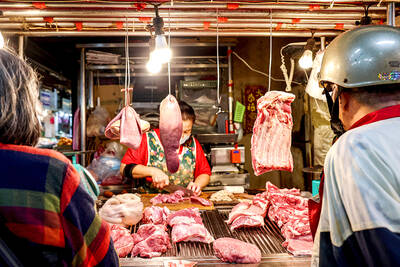Today, everybody knows that we have to brush our teeth. But not too long ago, that was a new idea.
The first toothbrushes weren't made of plastic like the toothbrushes today are. Back in the 1800s, they were made of animal bones and hair. As you might imagine, they didn't work very well. In 1938, an American company made the first plastic toothbrush.
People started using floss a long time before they started brushing their teeth. Scientists have found teeth from humans who lived thousands of years ago that show that some of them flossed their teeth.

PHOTO : AP
As for toothpaste, people have made it out of all kinds of different ingredients throughout history. In America in the 1700s, some people made toothpaste out of bread, and in the 1800s they made it out of charcoal! (Marc Langer, staff writer)
現今,人人都知道要刷牙。不過這可是個在不久之前才出現的新點子。
世上第一隻牙刷並非像今日的牙刷一樣是由塑膠製成的。回溯至十九世紀,牙刷是用動物骨骸與毛髮製成的。你可以想像,它們並不是很好用。一九三八年,美國一家公司率先推出世界上第一隻塑膠牙刷。
早在人們開始刷牙前,就已使用牙線。科學家由數千年前人類的牙齒發現,有些人用牙線剔牙。
至於牙膏,縱觀古今歷史,人們曾使用五花八門的材料來製造牙膏。十八世紀時,有些美國人利用麵包來製造牙膏,而在十九世紀,人們則是用木炭來製造牙膏。
(翻譯:賴美君)

Pigs that are resistant to a deadly viral disease have been created by scientists at Edinburgh’s Roslin Institute. The gene-edited animals remained healthy when exposed to classical swine fever (CSF), a highly contagious and often fatal disease. The virus was eradicated in the UK in 1966, but there have been several outbreaks since and it continues to pose a major threat to pig farming worldwide. “Classical swine fever is a devastating disease for livestock and farmers as we saw with the outbreak in the UK, 25 years ago,” said Helen Crooke, mammalian virology deputy leader at the Animal and Plant Health Agency

Have you ever seen a circular intersection where cars continuously flow in one direction around a central island? That is a “roundabout,” a well-known alternative to traditional intersections. Drivers enter and exit at different points without relying on traffic lights. Their primary purpose is to improve traffic flow and minimize the likelihood of high-speed collisions, particularly dangerous T-bone and head-on crashes. Roundabouts have existed and been implemented for over a century. In the 1960s, the modern roundabout emerged in the UK, with added rules for yielding. Unlike intersections with red lights, roundabouts allow vehicles to continue moving at a

A: So you’re reading Jin Yong’s martial arts novel again? B: Yup, Jin’s novels are so fascinating, especially the trilogy: “Legends of the Condor Heroes,” “Return of the Condor Heroes,” and “Heaven Sword and Dragon Saber.” A: The late novelist published his first story in 1955, which means this year marks the 70th anniversary of his “wuxia” world. B: Wasn’t an English version of “Legends of the Condor Heroes” also released in 2018? A: Yes, but the debate over the translation of kung fu moves continues — like the evil move “Nine Yin Skeleton Claw.” A: 你又在重讀金庸的武俠小說啦? B:

If you’ve recently spotted adults parading around with cuddly toys dangling from their designer handbags, your eyes haven’t been deceiving you. The playful trend of adorning bags with cute charms has become popular among people of various ages. Plushies like Labubu and anime and manga characters such as Chiikawa have become must-have accessories that make personal statements. The practice of attaching charms to personal items has been common across cultures throughout history. In ancient civilizations, charms were often used as symbols of protection, good luck, or identity. Fast-forward to more modern times, and style icons like Jane Birkin, a